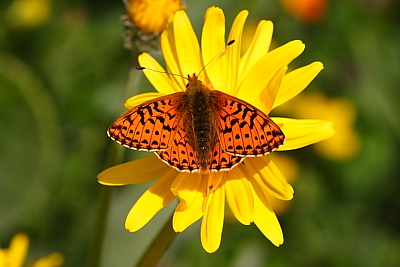
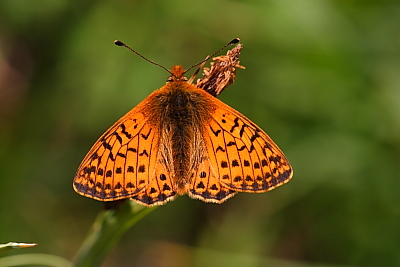
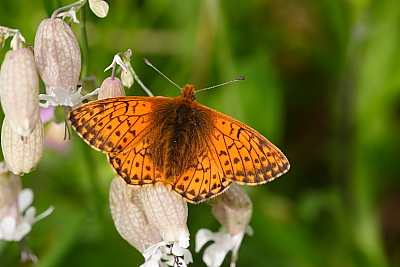
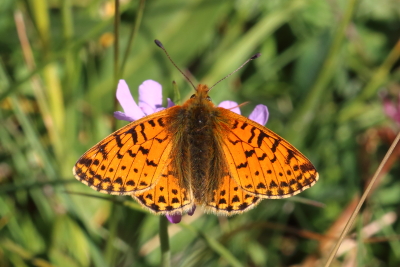
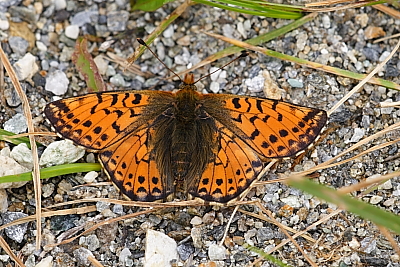
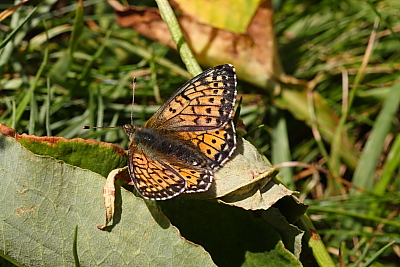
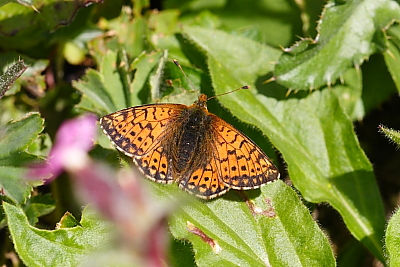
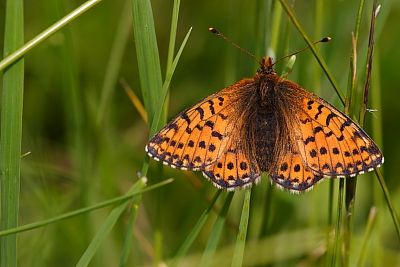
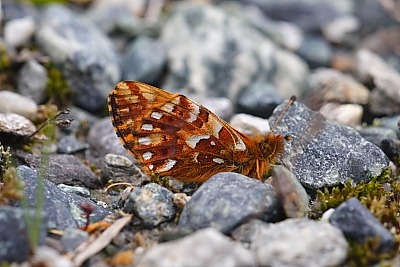
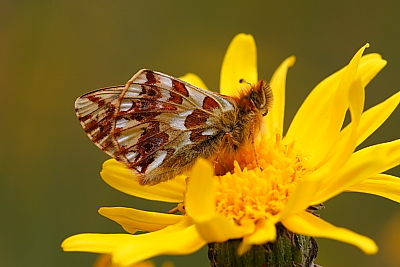
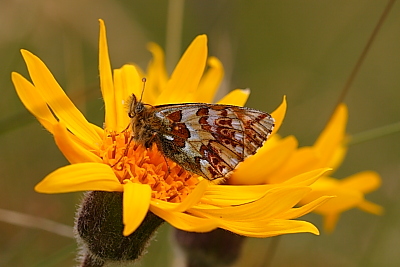
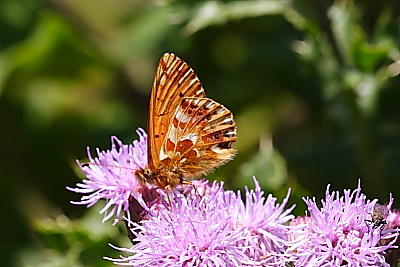
Shepherd's Fritillary (Boloria pales)
2024 photographs highlighted in yellow. Click on any photograph to go to an enlarged picture, or simply scroll down the page.
|
For comments on the taxonomy of the Boloria group please see the page for the Balkan Fritillary (B. graeca). Pales is very similar to the Mountain Fritillary (B. napaea) and the two are quite difficult to differentiate, especially as they often fly together at high altitudes. |
The female napaea is strongly suffused with a greenish sheen and quite different to the female pales. The principal differences between pales and napaea are discussed on the napaea page. |
| ref | sex |
observations |
alt. m |
| 26863 | M | a male, clearly pales (rather than napaea) because of the disjointed upf series of post-discal spots. I did wonder if graeca could be a possibility, given that the colouring and wing shape looked rather unlike pales, but the uph post-discal series of round black spots did not seem large enough for graeca. Apart from that, I could not see any obvious way of differentiating the male uppersides of pales and graeca. TLID refers to the graeca uph margin (at about v3) as angular, although not appearing particularly angular in the illustration in the book, but 26863 is really not angular. An underside shot, which I don't have, would have been conclusive. | 2320 |
| 30489 | M | a male, a rather suffused orange, but the heavier markings and non-linear upf post-discal series point to pales. | 2000 |
| 36425 | M | I believe this to be pales, even though the markings are relatively fine, based on the disjoint in the upf series of post-discal black spots. | 2090 |
| 49834 | M | a male. The series of upf post-discal spots is quite light compared to the norm, although the other markings are quite strong. The disjoint in the post-discal spots is quite marked which I believe removes any possible element of doubt that it is pales and not napaea. | 1960 |
| 36330 | F | a rather suffused female, with a noticeably square wing shape. | 2090 |
| 30815 | F | a female, heavily suffused and with very dark margins, but without the sheen that would indicate napaea. The non-linearity of the upf post-discal series is fairly conclusive indication of pales. | 2020 |
| 23032 | F |
clearly a female and it does not have any suffusion so it must be pales. Also the upf post-discal spots are clearly offset which strongly points to pales. |
2200 |
| 23268 | F |
clearly a female and, even though heavily marked and quite a dark, dull orange, it does not have any suffusion, so it must be pales. Also the upf post-discal spots are very clearly offset which I feel is fairly overwhelming evidence that it is pales. |
2090 |
| 23000 | M |
the redness and the contrasted white marginal marks are good pointers to pales. |
2200 |
| 26859 | M | a beautifully designed underside, such subtlety of the markings and the colours. | 2320 |
| 27598 | M | a male underside, not quite as well defined as 26859. | 2160 |
| 38902 | M | a male underside from the Hautes-Pyrénées, where the subspecies pyrenesmiscens flies. This appears to be paler and less contrasted than those that fly in the Alpes. | 2120 |
26863_male_Alpes-Maritimes_10Jul11
30489_male_Alpes-Maritimes_4Jul12
36425_male_Valais, Switzerland_20Jul14
49834_male_Hautes-Alpes_12Jul22
36330_female_Valais, Switzerland_19Jul14
30815_female_Hautes-Alpes_7Jul12
23032_female_Valais, Switzerland_24Jul10
23268_female_Valais, Switzerland_26Jul10
23000_male_Valais, Switzerland_24Jul10
26859_male_Alpes-Maritimes_10Jul11
27598_male_Valais, Switzerland_22Jul11
38902_male_Hautes-Pyrénées_22Jul15